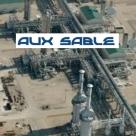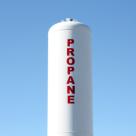Last Friday the price for ethane in E-P mix in Conway dropped to 4.5 cnts/gal for a period of time. According to OPIS, the price averaged 7.25 cnts/gal for the day. Those numbers are all-time low prices for the product, and rock bottom by anyone’s definition. As we discussed here in Monday’s post titled Monitor-Monitor on the Wall, Who’s the Cheapest Hydrocarbon of All, these are prices at the Conway Hub. Most NGLs coming into Conway incur a transportation fee to get there and a fractionation fee to convert mixed NGLs into salable products. That deduct can be between 6 and 12 cents per gallon. Let’s say the deduct is 10 cnts/gal. Subtract that from 7.5 and by my math that’s negative 2.5 cnts/gal. It’s hard to make money selling at negative prices. Fortunately producers and natural gas processors are still making good money churning out propane, butanes and natural gasoline.
Daily Energy Blog
The cheapest hydrocarbon? Natural gas you say? Not even close. It is ethane (in E-P mix) situated in suburban Conway, Kansas. We’ve looked at cheap Conway ethane before, but never like this. Because it has never been like this. Even OPIS, which has been tracking NGL prices since Methuselah was a young whipper-snapper has not seen this level of prices.
At the recent Platts Oil and Gas Conference in Denver, the reoccurring theme was outbound capacity constraint. The area needs a lot more crude oil pipelines and rail terminals to mitigate regional oil price crashes (see Bakken’ and a Rollin’ at Clearbook and Guernsey). The natural gas situation is worse, with more than one-third of natural gas on the North Dakota side of the Bakken being flared. The region needs more gas gathering systems and more takeaway capacity.
I’m doing two more conferences this week. Yesterday I was a speaker at the Gas Processors Association (GPA) annual conference in New Orleans. Appropriately the theme of this year’s conference is …Laissez les bons temps rouler… …Let the good times roll, and that was certainly the case. As extensively documented here in our series on gas processing economics - the Golden Age of Natural Gas Processors – times have never been better for gas processors. And it seemed like there was a smile on everyone’s face to prove it.
Yesterday the price of ethane in E/P mix in Conway dropped again, now down to 14.5 cnts/gal, or $6.09/Bbl. A lot of the ethane barrels that move down the ONEOK Overland Pass NGL pipeline from Opal, WY to Conway, KS get priced out based on Conway ethane numbers. We talked about this situation last Wednesday in Not Gonna Lie.
If you don’t have young teenagers (I don’t) and are not in the blogging business (I am), you might not be keeping up with the incredible number of internet/texting acronyms that have entered the ‘language’ over the past few years. One such acronym is NGL which of course stands for Not Gonna Lie. Any Google of a search term containing NGL brings up this definition and all sorts of other interesting hits. For your general edification I’ll be working some of these into the RBN blogs. That way you can use these terms to entertain your friends and look cool to your teenagers.
This is Part V of a series on the Golden Age of Natural Gas Processors. The first four parts reviewed the crude-to-gas ratio at 50X, the impact of increasing NGL production on prices, the uplift value provided by gas processing, and who gets all the money. Today we examine the incredible magnitude of gas processor’s margins – if the processor has access to the right gas streams.
This is Part IV of a multi-part series on the Golden Age of Natural Gas Processors. The first three parts covered the following topics:
- Part I – Crude-to-gas ratio; historical trends; Influence on natural gas processing; frac spreads
- Part II - Impact of increasing NGL production on prices, and how NGL markets are responding to the price changes.
- Part III - Uplift in value provided by natural gas processing at today’s prices – how the math works
Today we look at how much money natural gas plants make, who gets the money and what that means for both producers and processors.
In the previous posts of this series (Part I and Part II) we’ve looked at the relationship between NGLs and crude (weaker), the differences between the price performance of light and heavy NGLs (weaker vs. stronger) the frac spread for a typical plant (huge). Assuming we buy the logic that the crude-to-gas ratio will be this healthy for quite some time, what does that mean for the profitability of natural gas processing – how much value is created when wet natural gas is processed?
This post continues yesterday’s review of the Golden Age of Natural Gas Processors, an analysis of the 50X crude-to-gas ratio on the economics of natural gas processing and the market for natural gas liquids. To fully understand this post, first see The Golden Age of Natural Gas Processors – NGLs in a 50X Crude-to-Gas Ratio World. Today we look at the impact of increasing NGL production on prices, and how NGL markets are responding to the price changes.
A long anticipated market milestone either has happened, is happening, or soon will happen. No I’m not talking about one-handle natural gas prices. That’s old news. The much more amazing number is a 50X crude-to-gas ratio. Whether it has happened yet or not depends on which prices you use to calculate the ratio. More on that below. But regardless of your math, one thing is certain. The value of extracting a hydrocarbon molecule in gaseous form and selling that molecule as a liquid has never been higher. It is a golden age of natural gas processing. It is a business that over the past two years (since March 2010) has experienced a decline in feedstock costs of more than 50% and an increase in its traditional measure of profitability – the frac spread –by +33%, from $9/MMbtu to almost $12/MMbtu.
To everything there is a season. And this spring is the season for plant turnarounds in the NGL industry. Fractionators will be offline. Petrochemical plants will be down. And NGL market prices, already buffeted by huge production increases from the shale phenomenon will feel the brunt of the outages.
This post continues yesterday’s review of the Conway ethane market. If you did not see that one, please go to The Decline and Fall of Conway Ethane – Implications of a 75% collapse in price. Otherwise the paragraphs below won’t make much sense.
On Friday, the Conway ethane (in E/P mix) price crashed to 13.5 cnts/gal. No this is not the Decline and Fall of Western Civilization (neither the actual event or the punk rock movie of that name), but it is an important development for NGL and natural gas markets. Six months ago the E/P mix price stood at 56 cnts/gal. That’s a 75% drop. Last week the price decline was particularly swift – 40% in five days.
Over the past couple of years, the NGL market has cussed and discussed every nuance of PADD I ethane. The fear that ethane bottlenecks would curtail Marcellus drilling worried a lot of producers, and their investors. But it finally looks like the problem is being fixed, and the winners are settling out. MarkWest and Sunoco will take 50 Mb/d north to Sarnia, Ontario on Mariner West. And another 90 Mb/d will go south on Enterprise’s ATEX Express, the TEPPCO line reversal project. Chesapeake and Range have both signed up to move barrels on ATEX which runs from MarkWest`s Houston, PA plant down to the Enterprise storage complex in Mont. Belvieu. It’s nice to have one problem behind us. Unless of course it turns out that Utica ethane piles on to the top of Marcellus. But that’s another story.

















